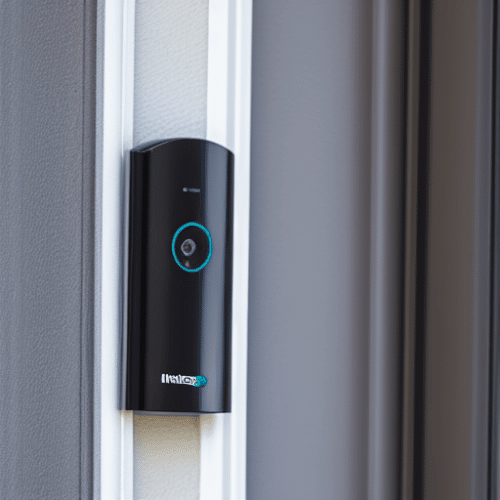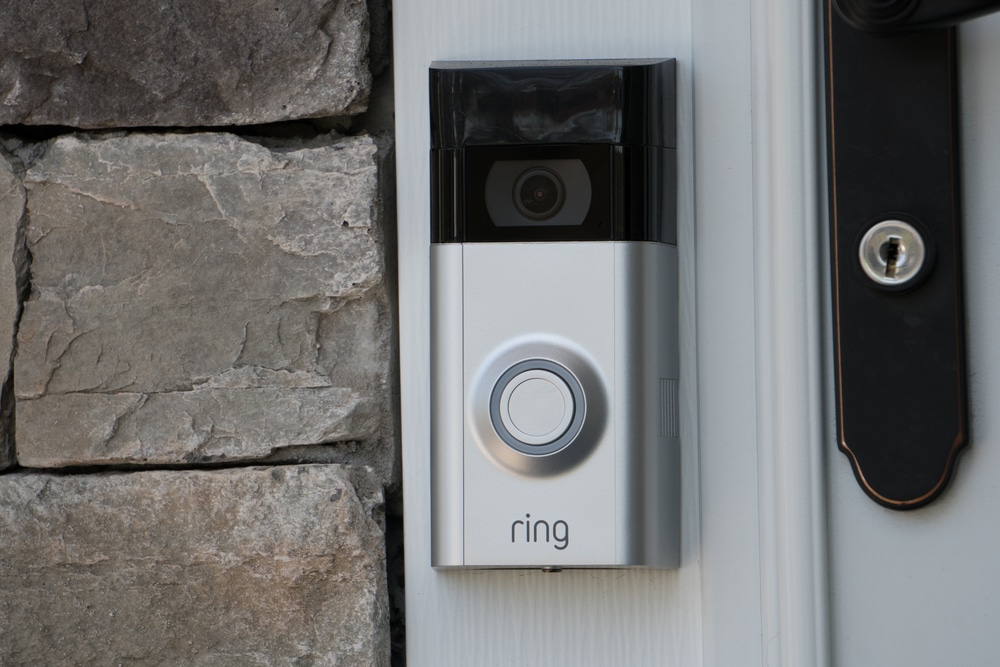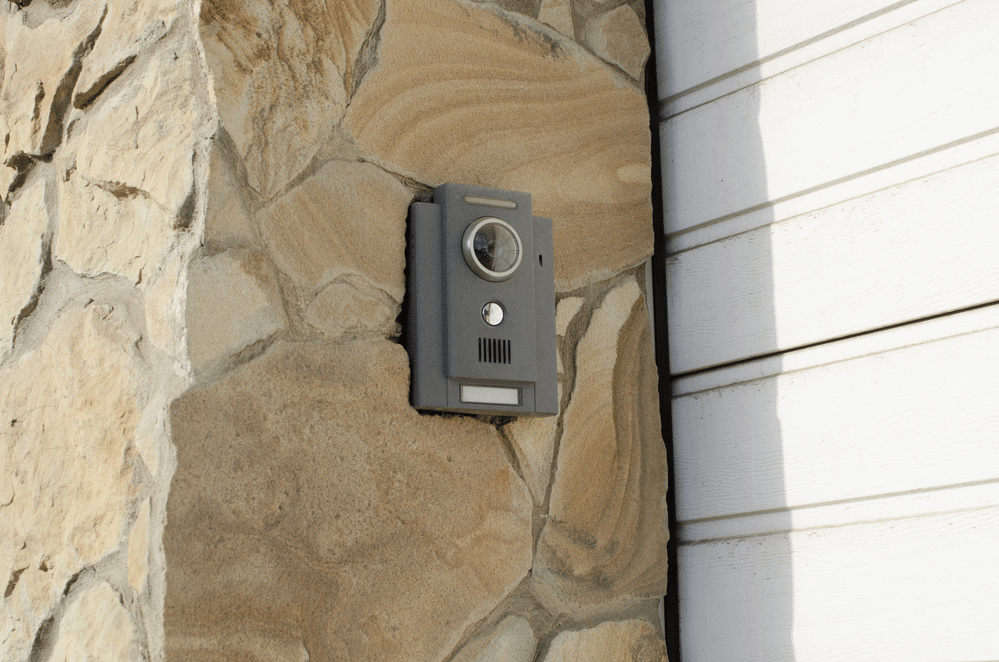Last Updated on
The basic principle of a wireless doorbell is that it allows you to quickly install a doorbell at your home without there being too many complications when it comes to the installation. As the name suggests, a wireless doorbell doesn’t have any wires involved when it comes to powering it, and that’s one of the real draws for installing a wireless doorbell at your home.
So, how does a wireless doorbell work?
This article will show you how a wireless doorbell works and some essential points to consider before buying one for your home.
The Basic Principles of a Wireless Doorbell System
With wireless doorbells, you have the doorbell part and a receiver. The person at your front door will press the doorbell button, and a signal is sent from the doorbell unit to the receiver unit. At that point, you are alerted to someone being at your door.
Basically, all doorbells work this way, but the difference is the power outlet and how the signal is sent between the two parts.
Important Points to Consider With a Wireless Doorbell
With so many wireless doorbells out there on the market, how do you even know which one to purchase? There are several essential points to consider, and the first one is how durable the wireless doorbell is going to be.

You need to remember that the doorbell is going to be at your front door. Unfortunately, that may mean it’s exposed to all sorts of weather. Most modern wireless doorbells are plastic and are protected from the elements, but you want to purchase a quality item made of better plastic that won’t just split.
Also, think of the range. The range is the distance that the wireless signal can cover. It does have a limit due to items getting in the way of the signal, so check what your wireless doorbell says is the maximum range. If you have a large house, you may need to get more than one receiver.
But let’s get into more details when it comes to the way a wireless doorbell works.
Modern Features
Modern wireless doorbells come with different features compared to the older versions. Aside from the usual transmitter, receiver, batteries, and fixings, they often have additional security features designed for the smart home.
Debating which wireless doorbell to go for 🤔
— Darren (@Glos7er) June 16, 2021
Now, you may have a feature whereby an individual presses your wireless doorbell and has the option of talking through it. Most wireless doorbells being designed now incorporate this feature, and the chime unit then works as a speaker inside your home, so the days of a wireless doorbell merely making a sound are now long gone.
Also, don’t forget that you also have wireless doorbells with cameras installed as well. They can then be linked to your smartphone, which is another innovative feature.
The Power Aspect
This option will be battery operated, and both parts of the doorbell will have their battery compartment. You need to access each compartment to install the batteries as a power source. The correct battery should come with your doorbell. If not, they tend to use standard batteries for a power source, so finding replacements won’t prove too difficult.
The Push Button
Someone comes up to your door and presses the push button. What happens next is the same as most doorbells.
After pressing the button, a piece of metal within the doorbell is pushed down and completes a connection with a wire. It then sends a signal down to the chime box, and that’s the point where you get the ringing happening.
So excited for my new classroom wireless doorbell 🤗 Great nonverbal way to get my Ss attention. 2 dings and “ all eyes 👀 on me” #teacherlife #teachershelpingteachers pic.twitter.com/GRQqIzqu8e
— Kellye Kaspar, M.Ed. (@math_mskaspar) July 20, 2019
That’s the basic explanation of the way wireless doorbells work, but they are slightly more involved.
The Chime Bar Makes the Sound
You need your doorbell to make a sound, and that’s where the chime bar comes into play. If you have a single chime bar, it will make one sound of a single tone. Two chime bars create the ding-dong sound we all love.
This part is the same with wireless units as it is with the wired version. However, it’s the way in which one part is alerted to someone being at the door that is different.
The Use of Wireless Signals
What you have with this type of doorbell is a wireless chime along with wireless transmitters. They cannot use electricity to send a signal between the two parts, so they use radio signals instead.
The way these doorbells work is that someone presses the transmitter button, and a radio signal is sent from there to your receiver unit. That then creates the noise and lets you know someone is at your front door.
Testing out my new wireless doorbell in class in order to get my students attention! #innovativeeducation #nonverbalcues #eyesonme the kids have a love-hate relationship with this so far 🤣 pic.twitter.com/Cq314B5ChN
— Lyndsey Larson (@MrsLarsonCHS) October 3, 2018
These radio waves make up the wireless signal, so you need to think about the placement to ensure the signal reaches point A and B.
Also, radio waves operate at a different frequency from anything that we can hear. However, the receiver part picks up on the frequency before activating the sound that alerts us to someone being at our door.
Making Sure the Wireless Chime Bar Works
With a wired doorbell, you had no reason to worry about whether or not the chime bar works. Everything was effectively plugged into the mains thanks to the wiring, so it would always function.
With the chime bar that comes with wireless doorbells, it will be able to be plugged into a power source, or you can use batteries. Using the battery option does mean you can move the chime bar around as long as it stays within range of the transmitter.
Your Sound Options
The final part we will look at is your sound options. Again, it will vary depending on the wireless doorbell you have purchased.
The remote we use to control our lights occasionally trips our wireless doorbell, so sometimes I’ll go to turn the lights off at 12:30 and instead get an absolutely cursed rendition of It’s a Small World.
— Nadia (nadiattlee.bsky.social) (@nadiattlee) June 12, 2021
A wireless doorbell won’t have a bell attached like the old versions. Instead, study the instruction manual for your version to determine if different ring tones apply.
Syncing Both Components
You need to sync both components to make sure they are working on the same frequency. It is easy to do, and it’s a step you must complete after the batteries have been installed.
You need to take the transmitter and receiver and press the sync button that appears on both. Keep them side by side at this point, as you need to press the button at the same time. That will set up the signal between the two sections, so the receiver will recognise the signal when the push button is activated.
After that, you can then install the doorbell as it’s ready for use.
Potential Problems With a Wireless Doorbell
So, you can see how these doorbells work via electromagnetic waves or radio signals, and no wiring is required. However, it can come with a few problems that you should perhaps be aware of before you install this system.
With a wired doorbell, the signal doesn’t escape the two components. But that’s not the case here.
Hi, do any Deaf/HOH folks have a recommendation on a *wireless* doorbell with a strobe light + very loud sound that isn't going to break in 3 months? It seems like so many things I'm finding die fast or have lights you can only see if you're *already* looking directly at it
— nico (perpetually lifeless) 🦥 (@unicornthorn) June 19, 2021
As wireless doorbells work via sending out wireless signals, some reports of it interfere with other wireless devices in a house. Therefore, there is the possibility of it momentarily affecting your WiFi or other wireless devices in your house.
It is due to the frequencies being used to transmit the signals. As a result, they can clash, and you may have even noticed it when your phone is next to another device and you hear that strange interference sound going on.
If this is the case, keep in mind that it will be infrequent.
Walls and Obstacles
The other main issue is going to be with walls and obstacles that can interfere with the signal. You want to keep the number of walls or problem areas down to a minimum to try and provide the receiver with the strongest signal possible.
Attempt to achieve a relatively straight line between the two parts. Of course, it is harder with a large house, but that’s where using more than one receiver and transmitter will come into its own.
Install a Wireless Doorbell at Your Home
So, how does a wireless doorbell work? It’s nice and simple, while you can install it pretty much in minutes. This battery-powered option will work for years without any problems, as long as you switch out the batteries when required. However, do keep in mind the issue with your WiFi in case that conflict in signals does actually then occur.
All you need to do is plug in the batteries, position the doorbell at your door, know where you will place the receiver, and then wait for someone to come and ring.
Nothing could be easier.
Paul is the type of person who never met a problem he couldn’t fix. He can always be found tinkering with something in his house, even if it isn’t broken! His tips and tricks are often shared on our site. He’s the one you call when something breaks because he has been known to improvise fixes for everything from leaky faucets to malfunctioning dryers.



